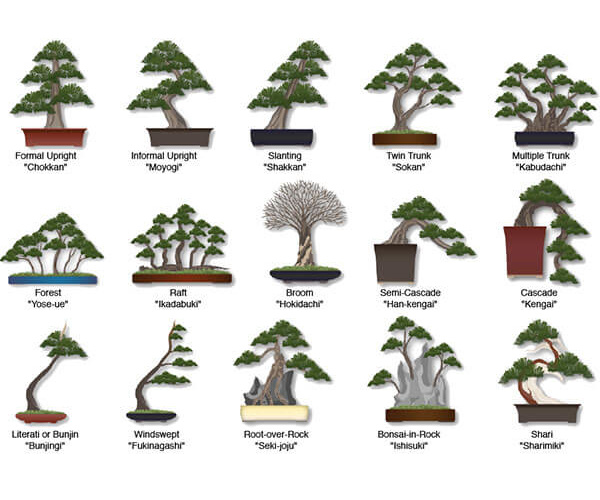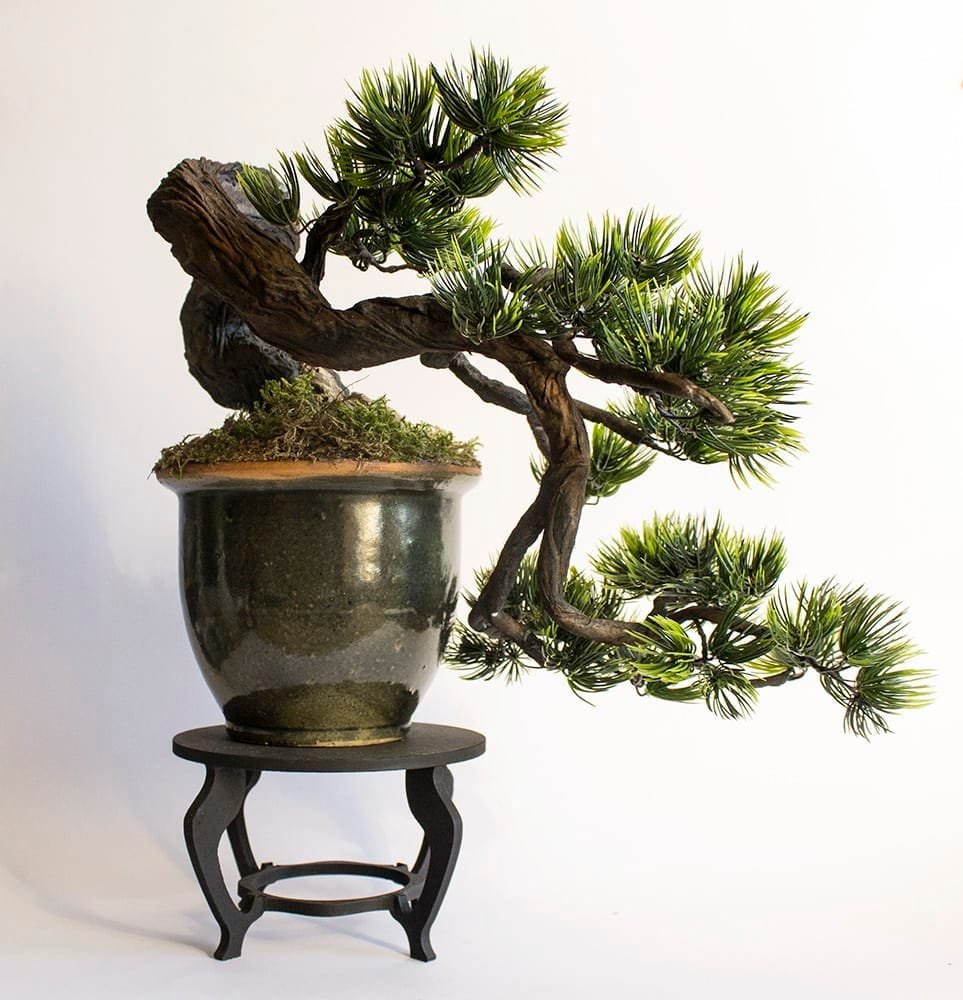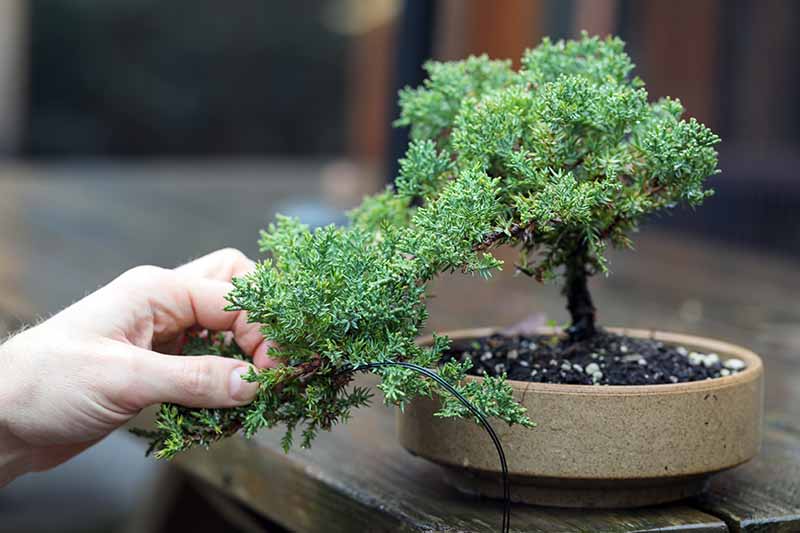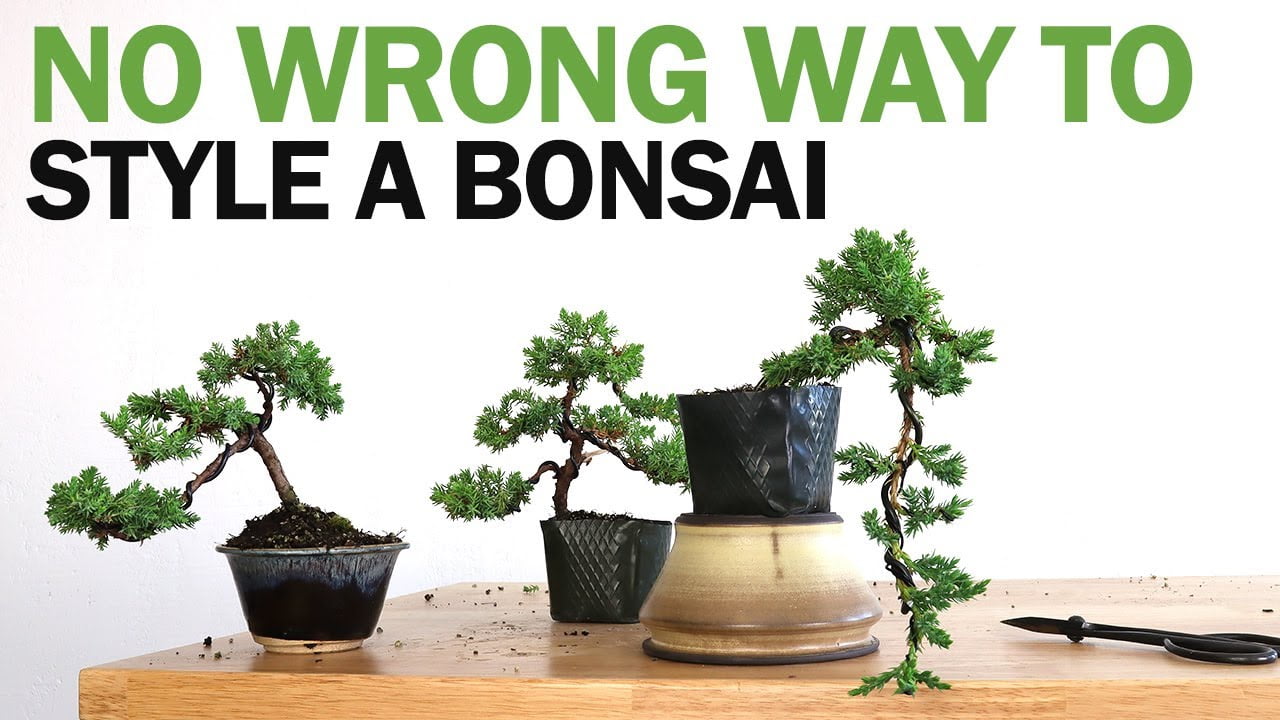Learn the art of styling a bonsai tree. Discover different techniques and tips to create a beautiful and well-designed bonsai tree that reflects your personal style. From species selection to pruning and shaping, unlock the secrets of bonsai tree styling.
Simplify the art of styling a bonsai tree. We will explore different techniques and tips to help you create a beautiful and well-designed bonsai tree. Whether you are a beginner or an experienced bonsai enthusiast, this article will provide you with the knowledge and inspiration to enhance the style of your bonsai tree. From selecting the right species to pruning and shaping, you will discover the secrets to creating a stunning bonsai tree that reflects your own personal style and taste. So, let’s get started and dive into the world of bonsai tree styling!
Introduction
What is a bonsai tree?
A bonsai tree is a miniature tree that is grown and pruned in a small pot, replicating the shape and style of a mature tree in nature. The art of bonsai originated in China and has since spread to Japan and other parts of the world. Bonsai trees are admired for their beauty and are often considered a symbol of patience, harmony, and balance. They require special care and attention to maintain their health and artistic form.
Why style a bonsai tree?
Styling a bonsai tree allows you to create a unique and artistic representation of nature in miniature form. By manipulating the tree’s branches, trunk, and foliage, you can create different styles that reflect various natural growth patterns and artistic designs. Styling a bonsai tree also provides a sense of fulfillment and satisfaction, as you witness the transformation of a small plant into a work of art. It is a creative and meditative process that allows you to connect with nature and express your own personal style.
Selecting the Right Bonsai Tree
Choosing the appropriate species
When selecting a bonsai tree, it is important to consider the species that is most suitable for your climate and growing conditions. Different species have different requirements in terms of sunlight, temperature, and humidity. Research the specific needs of each species before making your choice. Additionally, consider the size and shape of the tree you want to create. Some species are naturally more suitable for certain styles, while others can be trained and shaped to achieve the desired effect.
Considering the tree’s age and health
The age and health of a bonsai tree are important factors to consider when styling. Younger trees are more flexible and can be shaped more easily, while older trees may require more time and effort to achieve the desired style. It is also important to ensure that the tree is in good health before styling, as weak or diseased trees may not be able to withstand the stress of pruning and shaping. Take the time to assess the overall condition of the tree and address any health issues before beginning the styling process.

Understanding Bonsai Tree Styles
Formal upright style
The formal upright style is one of the most common and recognizable bonsai styles. In this style, the trunk of the tree grows straight and upright, with branches gradually decreasing in size and thickness as they ascend the tree. The overall shape of the tree is symmetrical and balanced, reflecting a sense of strength and stability. This style is often used for trees with a strong central trunk, such as pines and junipers.
Informal upright style
The informal upright style is characterized by a curved or slightly tilted trunk, giving the tree a more natural and dynamic appearance. The branches in this style also vary in size and thickness, creating a sense of movement and asymmetry. This style is often used for trees with a more flexible trunk, such as maples and elms.
Slanting style
The slanting style is achieved by tilting the tree to one side, creating a diagonal or slanted effect. The trunk remains straight, but the branches and foliage are angled towards the opposite side, giving the tree a sense of movement and grace. This style is often used for trees with a flexible trunk and branches, such as junipers and pines.
Cascade style
The cascade style mimics the image of a tree growing on a mountain or cliff, with the trunk and branches cascading downwards. The trunk of the tree is usually bent or curved, creating a sense of movement and drama. The branches and foliage hang below the pot, adding to the overall aesthetic appeal. This style is often used for trees with long, flexible branches, such as cedars and pines.
Semi-cascade style
The semi-cascade style is similar to the cascade style, but the trunk and branches do not hang as dramatically below the pot. Instead, they bend slightly downwards, creating a more subtle and balanced effect. This style is often used for trees with a more upright trunk and branches, such as junipers and maples.
Windswept style
The windswept style portrays the image of a tree that has been shaped by strong winds and harsh weather conditions. The trunk and branches are angled in one direction, as if being pushed by a powerful gust of wind. The branches and foliage on one side of the tree are longer and fuller, while those on the opposite side are shorter and bare, creating a sense of movement and asymmetry. This style is often used for trees with flexible branches, such as junipers and pines.
Broom style
The broom style features a straight trunk with branches radiating outwards at regular intervals, creating a symmetrical and compact shape. The overall appearance of the tree resembles a broom, hence the name. This style is often used for deciduous trees with small leaves, such as maples and elms.
Literati style
The literati style, also known as bunjin or literati, is characterized by a tall, slender trunk that twists and turns in an elegant and unconventional manner. The branches and foliage are sparse and irregularly spaced, creating a sense of age and wisdom. This style is often used for trees with a slender trunk and small leaves, such as pine and juniper.
Group planting style
The group planting style, also known as forest or yose-ue, involves planting multiple trees in a single pot or tray. The trees are arranged in a way that mimics a natural forest or grove, with varying heights, trunk thickness, and foliage patterns. This style creates a sense of harmony and community among the trees. The species used in group plantings can vary, but typically consist of trees with small leaves and flexible branches, such as maples and elms.
Tools and Materials Needed
To style a bonsai tree, you will need several tools and materials to assist you in the process. Here are some essential items:
Pruning shears
Pruning shears are used to trim and shape the branches and foliage of the bonsai tree. They should be sharp and clean to ensure a clean and precise cut.
Concave branch cutter
A concave branch cutter is a specialized tool that is used to remove larger branches from the bonsai tree. It creates a concave cut, allowing the wound to heal more quickly and seamlessly.
Wire cutters
Wire cutters are used to cut and remove the wires that are used to shape and position the branches of the bonsai tree. They should be sharp and sturdy to ensure clean and precise cuts.
Bonsai wire
Bonsai wire is used to gently bend and shape the branches of the bonsai tree. It comes in various sizes and gauges, depending on the thickness and flexibility of the branches.
Bonsai soil
Bonsai soil is a specialized blend of soil that is designed to provide the necessary nutrients and drainage for the bonsai tree. It is usually a mixture of organic matter, such as compost and peat moss, and inorganic material, such as sand and gravel.
Bonsai pot
A bonsai pot is an essential component of styling a bonsai tree. It provides a suitable environment for the tree to grow and allows for proper drainage and aeration. Bonsai pots come in various shapes, sizes, and materials, ranging from traditional ceramic pots to modern plastic containers.

Preparing the Bonsai Tree for Styling
Assessing the tree’s health
Before starting the styling process, it is important to assess the health of the bonsai tree. Look for any signs of disease, pest infestation, or nutrient deficiencies. If you notice any issues, address them before continuing with the styling process.
Clearing away unnecessary foliage
To create the desired style and shape, it is often necessary to remove some of the branches and foliage. Carefully evaluate the tree and remove any branches that are unnecessary, damaged, or weak. This will allow more light and air to reach the remaining branches and encourage healthy growth.
Trimming excess roots
Trimming the roots of the bonsai tree is an important step in maintaining its health and controlling its size. When repotting the tree, carefully remove excess roots to create a balanced root system. Trim any long or tangled roots to promote a dense and compact root ball.
Choosing the front view
Before styling, it is important to choose the front view of the bonsai tree. This is the side that will face the viewer when the tree is displayed. Consider the tree’s natural characteristics, such as the shape of its trunk and branches, and choose the side that presents the most aesthetically pleasing view.
Basic Styling Techniques
Wiring branches
Wiring is a fundamental technique used in bonsai styling to shape and position the branches. Start by selecting a suitable gauge of bonsai wire that is slightly thicker than the branch you want to bend. Gently wrap the wire around the branch, making sure not to cause any damage or breakage. Position the wire at an angle and tighten it slightly, allowing for flexibility and movement. The wire should be left on for a few months to allow the branch to set in its new position, and then removed to prevent wire marks.
Positioning branches
When styling a bonsai tree, it is important to consider the positioning of the branches. The branches should be evenly spaced and radiate outwards in a natural and balanced manner. Use wire and guy wires to gently bend and position the branches, creating movement and depth. Take care not to over-bend or stress the branches, as this can cause damage or breakage.
Creating movement
Creating movement in a bonsai tree is essential to achieving a natural and dynamic appearance. Use wire and gentle bending techniques to create curves and twists in the trunk and branches. This will add depth and visual interest to the overall design. Pay attention to the flow of the tree, ensuring that it follows a graceful and harmonious line.
Enhancing taper and thickness
Taper is the gradual decrease in thickness from the base of the trunk to the tip of the branches. It is an important characteristic of a well-styled bonsai tree, as it creates a sense of age and maturity. Use pruning shears and wire to carefully shape and thin out the branches, allowing for a more gradual taper. Remove any branches or foliage that disrupt the desired tapering effect.
Creating the apex
The apex of a bonsai tree refers to the highest point of the tree, where the main trunk or main branches converge. It is an important focal point that adds character and visual interest to the overall design. Use pruning shears and wire to shape and position the apex, creating a well-defined and balanced crown. Take care not to create a flat or rounded crown, as this can detract from the natural appearance of the tree.

Advanced Styling Techniques
Grafting
Grafting is an advanced technique used in bonsai styling to add or change branches or foliage on a tree. It involves attaching a branch or shoot from one tree onto the trunk or branch of another tree. This technique allows for greater flexibility and creativity in styling bonsai trees. However, grafting requires skill and knowledge, as well as careful consideration of the compatibility of the different tree species.
Air layering
Air layering is a technique used to propagate and shape a bonsai tree at the same time. It involves removing a section of bark and creating a wound on a branch, then covering the wound with a special growth medium. This encourages the branch to produce roots in the desired location. Once the roots have formed, the branch can be removed from the parent tree and potted as a separate bonsai tree. Air layering is a useful technique for creating interesting and unique bonsai trees.
Carving
Carving is a technique used to enhance the appearance of a bonsai tree by creating texture and detail on the trunk and branches. This can be done using various carving tools, such as gouges and knives, to create scars, hollows, and other natural-looking features. Carving adds character and depth to the tree, making it more visually interesting and realistic.
Deadwood techniques
Deadwood techniques involve intentionally creating or enhancing dead or decaying sections of a bonsai tree, such as dead branches or hollowed-out trunks. This technique is used to mimic the effects of natural aging and weathering on a tree. Deadwood can be created using carving tools and various techniques, such as jinning (stripping bark), shari (creating deadwood areas), and sabamiki (creating hollow trunks). Deadwood adds a sense of authenticity and character to a bonsai tree.
Maintaining the Styled Bonsai Tree
Regular pruning and maintenance
Once you have styled your bonsai tree, it is important to maintain its shape and health through regular pruning and maintenance. This includes removing any unwanted shoots, branches, or foliage that may interfere with the desired style. Pruning should be done carefully and thoughtfully, in order to maintain the overall shape and balance of the tree. Regular maintenance also includes checking for pests, diseases, and nutrient deficiencies, and taking appropriate action to address any issues that arise.
Watering and fertilizing
Proper watering and fertilizing are essential for the health and growth of a bonsai tree. Bonsai trees require frequent watering, as the small pots they are grown in dry out more quickly than plants in the ground. Water should be applied evenly and thoroughly, taking care not to overwater or underwater the tree. Fertilizer should be applied regularly, following the manufacturer’s instructions, to provide the necessary nutrients for healthy growth. Balancing watering and fertilizing is crucial to maintaining the health and vitality of the tree.
Re-potting
Re-potting is an important maintenance task that should be done periodically to ensure the health and development of the bonsai tree. Re-potting involves carefully removing the tree from its pot, pruning the roots, and repotting it in fresh bonsai soil. This process encourages the growth of new feeder roots, improves drainage, and prevents the tree from becoming root-bound. Re-potting should be done when the tree is dormant and not actively growing, typically in early spring or fall.
Protection from extreme weather conditions
Bonsai trees are more vulnerable to extreme weather conditions, such as frost, heatwaves, and strong winds, due to their small size and exposed root systems. It is important to protect your bonsai tree from these conditions by providing adequate shelter or moving it indoors when necessary. Frost protection can be achieved by covering the tree with a protective material, such as fleece or hessian, and placing it in a sheltered area. During heatwaves, the tree should be provided with shade and extra water to prevent dehydration. Strong winds can be mitigated by placing the tree in a sheltered position or using windbreaks.

Displaying the Styled Bonsai Tree
Choosing a suitable display area
The final step in styling a bonsai tree is choosing a suitable display area that showcases its beauty and craftsmanship. Bonsai trees should be displayed in a location that allows for optimal viewing and appreciation, such as a garden, patio, or indoor display area. Consider the lighting, background, and overall ambiance of the display area when choosing a location. Ensure that the tree is visible from all angles and that it is not obstructed by other objects or plants.
Using stands or tables
To enhance the presentation of a bonsai tree, it is common to use stands or tables to elevate and display the tree. Bonsai stands and tables come in various styles and materials, ranging from simple wooden platforms to intricate ceramic or metal structures. Choose a stand or table that complements the style and size of your bonsai tree, ensuring that it provides stability and visual appeal.
Enhancing the presentation with props
In addition to stands or tables, you can enhance the presentation of your bonsai tree by using props to create a natural and harmonious environment. These props can include rocks, stones, moss, or miniature figurines that add depth and visual interest to the display. Be mindful not to overdo the props, as they should complement the tree rather than overshadow it.
Conclusion
Appreciating the art of styling bonsai trees is a rewarding and fulfilling journey. It requires patience, skill, and an understanding of nature’s beauty. By following the techniques and principles outlined in this article, you can begin to create your own unique bonsai tree and express your personal style. Remember that bonsai styling is an ongoing process of learning and refinement, and that each tree has its own personality and characteristics. Experiment, observe, and enjoy the process of nurturing your bonsai tree and watching it grow into a living work of art.



